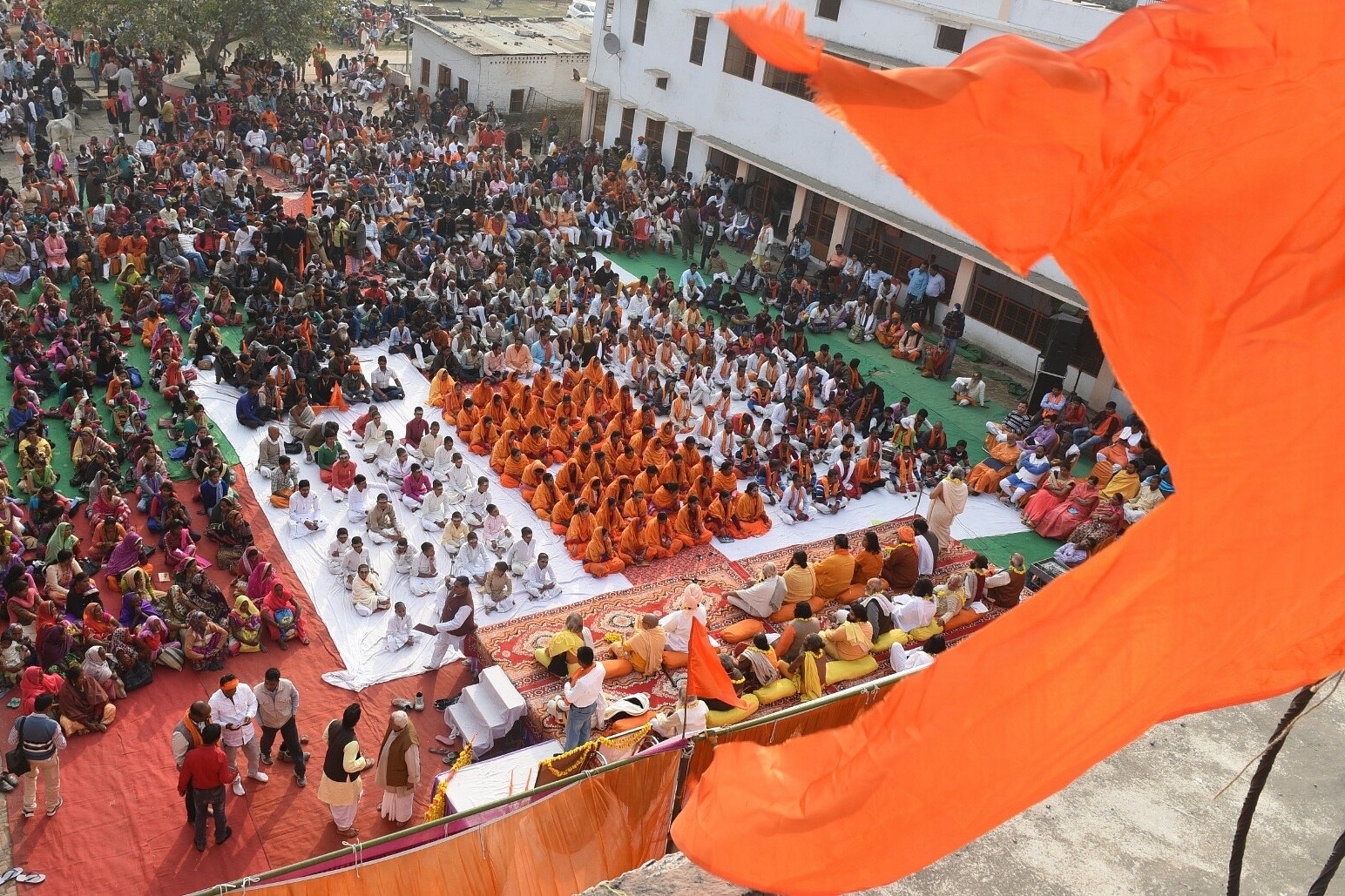Politics
Why The Struggle For Ram Temple Was The First, Truly Subaltern Mass Movement Of Independent India
- For several smaller Dalit and OBC castes, the Ram Mandir movement was the first instance of mainstream political mobilisation in post-independence India.
- It was for the first time that they appeared on the political map of the country and in the consciousness of political parties.

Representative image (The Ram Mandir movement was an all-inclusive process)
The Bhoomi Pujan of Ram Mandir on 5 August is the culmination of five centuries of Hindu struggle to reclaim and rebuild one of their most sacred sites.
It was a long-drawn struggle, often under hopeless conditions. The struggle got intensified with the decline of the Islamic imperial power under the British rule when Hindus were able to regain some access to the sacred site. However, it was after independence that this struggle blossomed into a full-blown democratic struggle with mass mobilisation and organised campaigns.
Initially, the movement was led by Ramchandra Paramhans who headed the Ram Janmabhoomi Nyas and other Hindu religious groups. The entry of the Vishwa Hindu Parishad (VHP) under Ashok Singhal dramatically scaled up the movement, and from the mid-1980s onwards the Bharatiya Janata Party (BJP) under L K Advani also joined the ground-swell of increasing clamour for the restoration of the Ram Mandir.
The movement was unique; it was as much a religious movement as it was a social and political one. The intensity and widespread appeal of the movement surprised the ruling elites who had presided over the fate of India since 1947 and sought to reshape it to their ideological imagery.
The Ram Mandir movement was a subaltern mass movement since inception. It was the movement of local dialect speakers from small towns and villages who had no access to the corridors of power and intellectual discourse zealously guarded by the English-speaking elites.
It was the movement of villagers, the poor and the newly-emerging middle class seeking to create a political space for themselves. The lightning speed with which it spread shows it had the character of a popular uprising against the Nehruvian establishment with angst and anger of the subaltern against elites turning into rage.
The Ram Mandir movement was also the turning point in the history of the Hindutva movement in India.
Before it, the ‘Hindu causes’ or movements hardly found an active constituency among the Dalits and Other Backward Class (OBC) castes. They were confined mainly to the religious institutions or appealed to the upper castes in the mofussil towns at best. But the Ram Mandir movement became the focal point of convergence of Hindu castes across the spectrum.
The appeal of Ram has historically cut across the barriers of caste, region, and language. Ram was a main deity in the medieval Bhakti movement in both of its ‘sagun’ and ‘nirgun’ forms. The challenge Bhakti movement posed to discrimination, social orthodoxy and religious exclusivism made it deeply rooted among these castes. Even today many Ram Bhakti sects are commanding huge following among subaltern castes.
Notwithstanding the criticism levelled against Ramayana in scholarly and activists’ circles, Ram appealed to the masses in his way. It has been especially true ever since Tulsidas wrote the Awadhi version of Ramayana: the Ramacharitmanas.
The beautiful devotional poetry took Ram to every household in north India irrespective of caste or community. It left a deep imprint on the emerging Bhakti movement with Ram becoming the universal deity in almost all its strands. And just like Ram united Hindu society in the medieval age, it once again united Hindus in the 20th century CE.
For several smaller Dalit and OBC castes, the Ram Mandir movement was the first mainstream political mobilisation in post-independence India. It was for the first time that they appeared on the political map of the country and in the consciousness of political parties. It politicised them, mobilised them around their caste myths and legends and enabled them to assert their place under the Hindu identity.
It is not for nothing that the leaders like Kalyan Singh, Uma Bharti, Sadhvi Ritambhara were the face of the movement. Ram Mandir finally enabled BJP to make a dent in the subaltern castes with the emergence of leaders like Keshav Prasad Maurya, Vijay Sonkar, Vinay Katiyar and Sakshi Maharaj. The mobilisation of the subaltern castes was the driving force behind the potency of the movement which shattered the hubris of the Nehruvian establishment.
The Ram Mandir movement fundamentally transformed the politics of post-independence India. It ended the political isolation of the BJP, expanded the social constituency of Hindutva, and created a new Hindu vote cutting across caste lines.
Over time it would also destroy the left-leaning secular academia and intellectual discourse by forcing the debates that it wanted to brush aside.
The court hearing and testimonies of the ‘eminent historians’ has discredited the history writing and credibility of old academia beyond salvage.
The Ram Mandir movement has always been more than a religious movement. It was a Hindu socio-political movement with several undercurrents: redressal of the historical wrongs, subaltern mobilisation and social engineering and reimagining the future of India. And all those symbolisms are present in the way the Mandir Trust has been proceeding towards the temple construction.
In a way, the conclusion of a five centuries-old struggle is laying down the foundation of a new future of Hindu society and polity.
Introducing ElectionsHQ + 50 Ground Reports Project
The 2024 elections might seem easy to guess, but there are some important questions that shouldn't be missed.
Do freebies still sway voters? Do people prioritise infrastructure when voting? How will Punjab vote?
The answers to these questions provide great insights into where we, as a country, are headed in the years to come.
Swarajya is starting a project with an aim to do 50 solid ground stories and a smart commentary service on WhatsApp, a one-of-a-kind. We'd love your support during this election season.
Click below to contribute.
Latest